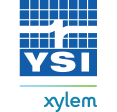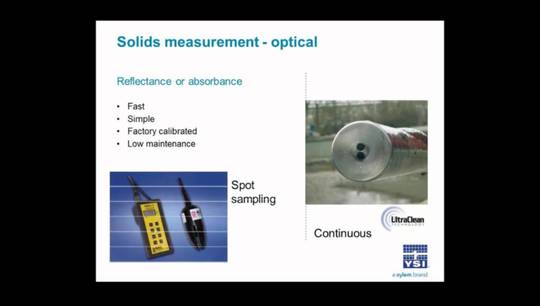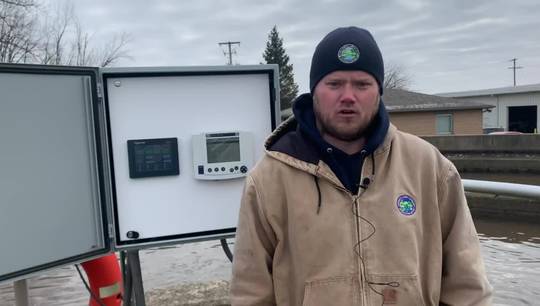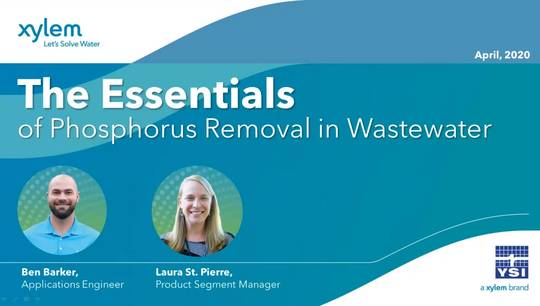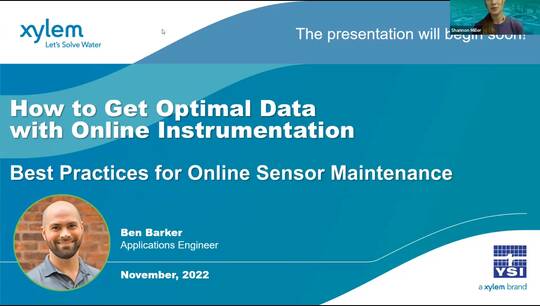YSI IQ SensorNet | Optimize Your Process & Reduce Operating Costs
Justin: Hello from YSI. I'm Justin King, associate product manager for the IQ SensorNet System. And in this video, I'll be sitting down with Ben Barker, our applications engineer here at YSI. I'll be asking him questions about how the IQ SensorNet System can help water and wastewater plants optimize their treatment processes as well as reduce operating costs. Ben has worked with IQ SensorNet for over five years. During this time, he's gained a lot of knowledge and experience working in the field with plant operators, integrators, and engineers. We'll also be talking about some of the application stories Ben has experienced while he's been in the field. So, how are you doing today, Ben?
Ben: I'm doing well. I'm excited to be here and I'm excited to talk about how IQ SensorNet can help solve process-related issues in wastewater treatment plants.
Justin: Awesome. So, I understand that IQ SensorNet can help plants save in a lot of different ways. For example, energy savings, chemical savings, and even in water savings. Not only that, but the system itself was designed to minimize the cost of implementation, maintenance, and expansion with its modular design.
Ben: Yeah, you're absolutely right. There's a lot of different ways IQ SensorNet that can help reduce operating costs.
Justin: So, I hear from our clients that a common way IQ SensorNet is used is to help with energy savings. Now, how exactly does analytical equipment do that?
Ben: That's correct. Plant energy costs can be expensive if not managed. For example, in a narration basin, blowers that are constantly running use a lot of energy, and all of that energy costs money. In a lot of cases, facilities are over-aerating their process to ensure their immediate compliance. By using an online DO measurement with YSI's FDO dissolved oxygen sensor, a plant can control its aeration process more efficiently by choosing a DO set point, and the blowers can be automatically adjusted based on the sensor's measurement. Take this for example. We have our FDO sensors at a facility in Montana. After installing the sensors, they found that they were over-aerating by four times what they needed. By automatically adjusting the aeration process with a DO set point, they were able to realize huge savings each month.
Justin: So, another way IQ SensorNet can help cut cost is through chemical dosing efficiency. Can you give me some examples of how this is done in a typical plant?
Ben: Yes, absolutely. Chemicals are dosed in wastewater for a variety of reasons, such as chlorine for disinfection, carbon for nitrate removal, or coagulants for phosphorus removal. They can become a large expense for a plant's operating budget. So, being as efficient as possible when dosing chemicals is a very important aspect of plant operations. With an online sensor or analyzer, plants can adjust their chemical dosing to the exact amount that they need rather than overdosing chemicals which can be expensive and cause issues. So, as an example, there is a plant in Wisconsin that is dosing aluminum sulfate to help meet at strict total phosphorus limits. Alum is a very expensive chemical, so efficiently dosing is very important to this plant. Initially, they were taking grab samples and manually adjusting the dosing pumps. This procedure had chemical costs of $10,000 a month. By adding an orthophosphate analyzer to the effluent and automating dosing control based on the analyzer's measurement, this plant was able to cut their monthly chemical costs by $1500, saving them a total of $18,000 a year.
Justin: Minimizing water loss and drinking water plants is an important aspect of day-to-day operations. Now, how is IQ SensorNet being used to keep excess water from being wasted?
Ben: IQ SensorNet can help drinking water plants save water in many different ways. For example, a drinking water plant in Pennsylvania is using IQ SensorNet's turbidity sensor in their filter system to optimize their backwash cycle. Originally, this plant would run two 20-minute rinses during their backwash cycle each day and they would waste all of the water they used. Since installing the IQ SensorNet VisoTurb, they are now able to monitor turbidity measurement and stop the rinse cycle when they reach their target turbidity, which cuts down on the rinse time and saves a lot of water in the process. On average, this plant now saves 1 million gallons of water each day.
Justin: So, we've talked about how using online sensors can save in energy, chemical, and water costs. But how can using IQ SensorNet over other sensor systems save money?
Ben: Well, I'm glad you asked that. IQ SensorNet actually has many features that allow it to be more user-friendly and cost-effective than the competition. To start, we utilize a one-cable design that carries both communication and power. This simplifies installation by minimizing cabling. So, instead of having power and communication cables running throughout the plant, we have one cable that accomplishes both. IQ SensorNet can also accept up to 20 sensors on a single system with a portable controller that can be placed anywhere in the system. This means that you only need a junction box at each measuring location instead of an expensive controller, which drastically reduces the overall cost of the system.
Justin: Well, thanks for taking the time to sit and talk with me about all the benefits that IQSensorNet can offer. I have one last question for you. Where can people find more information about IQ SensorNet?
Ben: That's easy. If you're interested in learning more about the benefits of IQSensorNet, just visit our website at ysi.com/iqsn.
YSI IQ SensorNet is a network of online controllers, sensors, and analyzers that continuously monitors water quality throughout the wastewater treatment process. IQ SensorNet can help wastewater treatment plants increase operational efficiency, lower operating costs, and improve performance. Ensure that your water resource recovery facility is within compliance and under budget with YSI’s wastewater instrumentation.
